Scar Tissue: What is it, Why is it bad, and How do I fix it?
What is Scar Tissue?
–Scar tissue is an area of dense fibrous tissue (collagen) that replaces normal soft tissues after an injury. Scarring is a natural part of healing, and almost every wound results in some degree of scar tissue deposition.
Here’s how scar tissue forms:
♦You get injured, whether repetitive stress (wear and tear), a sudden sprain/strain (twist an ankle), or you didn’t use the finger guard on your mandolin slicer (been there).
♦As a response, your body creates inflammation, which is a normal immune response (like the SWAT team within the human body to neutralize a threat).
♦The “SWAT team” AKA Inflammation neutralizes any remaining threats (bacteria and foreign bodies) and lays down “caution tape” (clot/scab) to seal off the area for damage control.
♦Inflammation can also cause pain (to stop you from doing more damage), muscle spasms (to protect/stabilize area), and collagen deposition(to repair the damaged area).
♦Collagen fills the injury site to act like a glue to repair the damage, so much so that it can wall off the injured site from the rest of the body. This is also known as fibrosis.
♦After the inflammation subsides the collagen remains as a scar or “patch” of the old injury.
You probably notice that scar tissue is not the same as the rest of your skin.
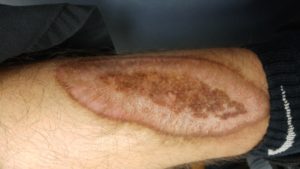
◊Different color/shade and feel
◊Doesn’t stretch and move like normal skin, contracts surrounding tissues
◊Usually altered sensation (very sensitive to completely numb)
◊Slightly weaker, more prone to re-injury
This is no different for injuries you cannot see (muscles, ligaments, tendons, organs)!
Did you know that the only tissue in your body that doesn’t scar after an injury is bone? That’s why you’ll hear people say they would have rather broken a bone than torn a ligament/muscle; because a bone will heal just as strong (if not stronger) than it was before, whereas soft tissue injuries take TIME AND WORK to return to normal, if ever.
Why is Scar Tissue bad?
Soft tissues (skin, muscle, ligament, etc.) are made up of collagen. The collagen is in a matrix pattern to provide strength and flexibility in multiple planes, like a basket-weave in normal tissues.
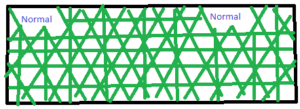
Scars are made up of the same collagen, but this time it is uni-directional and very densely packed. Collagen deposition can become so dense that it blocks off cell communication and further regeneration/repair (fibrosis). Scar tissue is never as strong and flexible as the pre-injured tissue and can take on varied appearances (keloid, hypertrophic, stretch marks).
Here’s an illustration of scarring versus facilitative healing:
Let’s start with an injury to soft tissue.
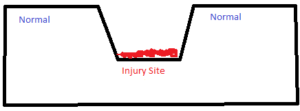
After an injury, your body forms a clot at the injury site as a first repair, think of a clot like a 2×4 to get across a ditch(injury).
A 2×4/clot will do the trick temporarily, but is not stable, not very functional, and a short term solution.
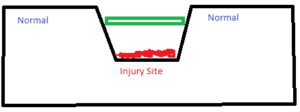
The 2×4 (AKA clot) forms the framework for repair, which can go two ways:
-You can continue to throw 2x4s on top of one another in a big pile until you can walk across it (uninhibited scarring)
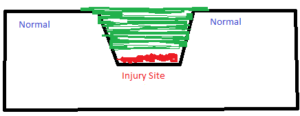
-OR-
-You can use the 2×4 as a foundation for a new, strong bridge (facilitative healing)
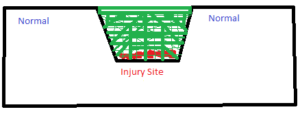
In both of these situations, you are bridging the gap of an injury with a scar, but the structures vary greatly.
Facilitated healing brings the injured site to the most functionality and strength, whereas uninhibited scarring leaves an injury site weak and dysfunctional.
Which would you rather walk across? Jump on?
How to Prevent/Minimize Scar Tissue
Some degree of scarring is unavoidable in most injuries. The worse an injury is and the longer it takes to heal, the more scar tissue you will deposit. This is why it is so important to “MESH” and injury and not “RICE” it (see my previous post on this topic here). By facilitating the healing of an injury, the repair will be stronger and more similar to uninjured tissue.
Our bodies respond to the demands we put them through. Tissue remodeling is something our bodies are constantly doing, and you can use this to reduce the negative effects of scar tissue and facilitate healing.
Movement and Manual Therapy is the Answer!
Manual therapies aim to stimulate tissue remodeling to normalize function (build a bridge). This can be mobilization to regain a range of motion, massage/stretching to promote optimal collagen “basketweave” formation, or manipulation to restore motion to a dysfunctional joint.
A combination of these works best.
Get out your lacrosse balls and foam rollers!
Over the past decade we have seen the emergence of more home care modalities (foam rollers, muscle sticks, lacrosse balls).
Use them!
Manual therapy will help you heal faster and stronger:
-Encourage a “basketweave” collagen matrix instead of a dense irregular scar
-Move fluid (blood, lymph, “nutrients”) around the injured area to prevent stagnation/buildup
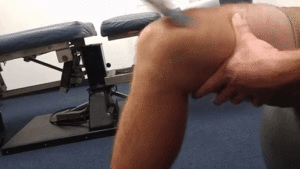
-Stimulate the surrounding nervous system to reduce pain and maintain tissue communication
-Regain full range of motion
-Retain full muscle strength and contractile forces